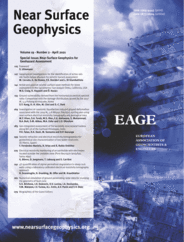
Full text loading...
 , Mikyung Choi3, Sun‐Cheon Park3
, Mikyung Choi3, Sun‐Cheon Park3
The city of Pohang in South Korea experienced substantial damage following the ML 5.4 earthquake on 15 November 2017. Damage surveys immediately after the earthquake revealed significant spatial variations in damage intensity across the epicentral area. We collected ambient noise data (three‐component seismic data) from 124 locations in Pohang, covering a total area of 17 km × 20 km, and applied the horizontal‐to‐vertical spectral ratio technique to estimate the resonance frequency, amplification factor and vulnerability of the ground to seismic shaking. Spatial variations exhibited by these three parameters are strongly correlated and consistent with variations in local geology. By comparing the distribution of the ground vulnerability index (Kg) with the damage distribution (or intensity) documented by the Korea Meteorological Administration following the earthquake, we confirm that the site effect is the prevailing effect that influences damage intensity in this region. We also demonstrate that Kg is an efficient proxy for identifying relatively fragile zones during ground shaking: in areas with a reported damage intensity of VIII, the proportion of the area with Kg > 20 is as high as 78.2%. Given that the study area has experienced a recent moderate earthquake, with significant economic consequences, our new results and analytical techniques will provide valuable information for future urbanization projects.

Article metrics loading...

Full text loading...
References


Data & Media loading...

